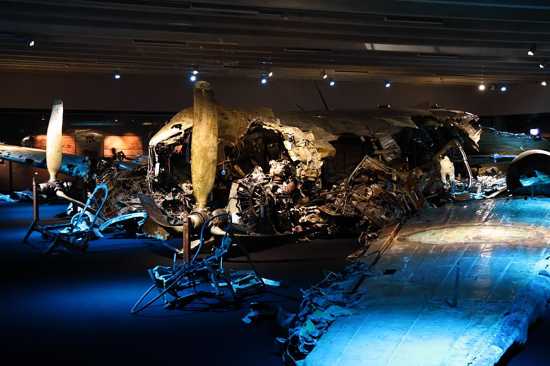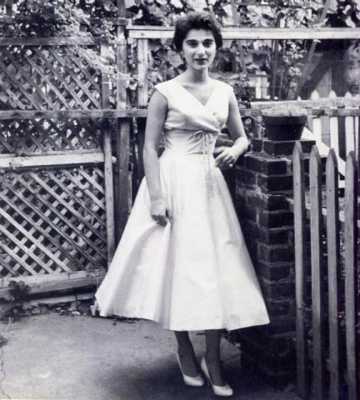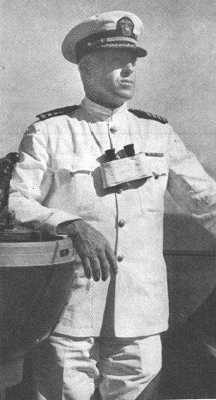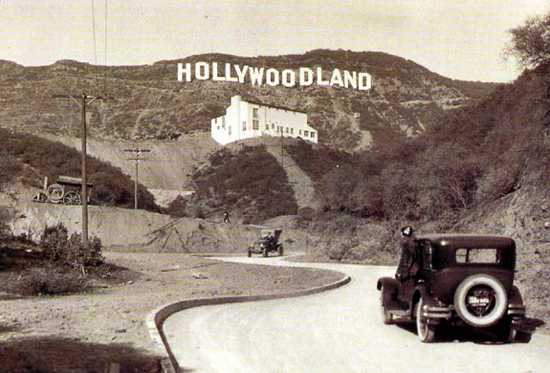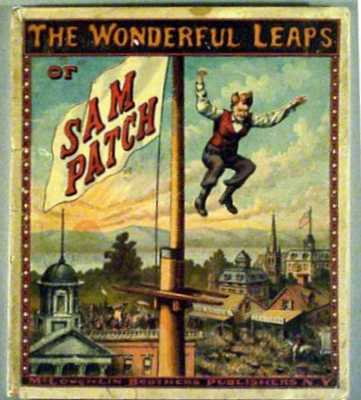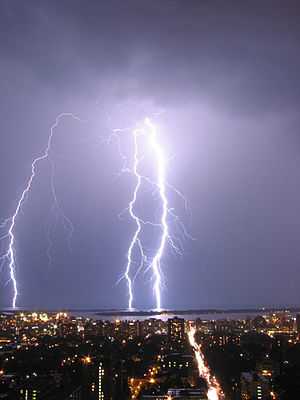Friday the 13th of any month, of course, is considered to be unlucky but it is just another ordinary day. Some years, not much happens on a month that has a Friday the 13th. Other years, history is made, for better or worse. Other internet lists that focus on events of Friday the 13th describe the most noteworthy events that have occurred – the crash of the rugby team’s plane in the Andes mountains in 1972, the 1970 Bangladesh flood, the 1989 stock market crash, the death of Tupac Shakur in 1996. This list will focus on ten of the lesser-known events that occurred on Friday the 13th.
Event: Tennessee Makes it Unlawful to Teach Evolution. On Friday, May 13, 1925, by a vote of 24-6, the Tennessee Senate voted to ratify the new state law called The Butler Act. The new law prevented Tennessee public school teachers from denying the biblical account of God creating man and prohibited the teaching of the theory of evolution in the classroom. Specifically, the new law stated “it shall be unlawful for any teacher in any of the Universities, Normals and all other public schools of the State which are supported in whole or in part by the public school funds of the State, to teach any theory that denies the Story of the Divine Creation of man as taught in the Bible, and to teach instead that man has descended from a lower order of animals.” Teachers who failed to comply could be charged with a misdemeanor offense and fined up to $500, a considerable amount of money in 1925. The law was made famous by the Scopes Monkey trial when a teacher, John Scopes, agreed to be arrested on the charges of teaching evolution in the classroom. The law was then challenged by the ACLU after Scopes was indicted and convicted. In 1927, the Tennessee Supreme Court found the law to be constitutional under the Tennessee State Constitution, but threw out the charges against Scopes on a technicality. During the trial, Butler told reporters: “I never had any idea my bill would make a fuss. I just thought it would become a law, and that everybody would abide by it and that we wouldn’t hear any more of evolution in Tennessee.” The law remained on the books until 1967.
Event: Soviet MIG Shoots Down Swedish Plane. On Friday, June 13, 1952, a Swedish C-47 airplane was performing secret Cold War electronic intelligence gathering operations for the US (Sweden being, supposedly, a neutral country). The plane was called “Hugin” after the mythological ravens used by the god Odin to gather information from all over the world. The planes were supposed to be normal transport planes but were, in fact, outfitted with five radio operator stations, each one listening in on Soviet electronic intelligence. The Hugin would become just one more of the many incidents of shooting down in the long Cold War air battle over gathering intelligence. A Soviet MIG fighter jet shot it down over the East Sea. All eight people on board were killed. Only a raft was found, no bodies or the plane were located until 2004, when they were recovered. Today the plane is on display at the Swedish Air Force museum. You can see the plane above.
Event: Henry Rowe Schoolcraft Makes a Big Discovery. Henry Rowe Schoolcraft was an early American geologist, geographer and explorer, who studied Native American cultures and is best remembered for what he found – the source of the mighty Mississippi River, on Friday, July 13th, 1832. Born in 1793, Schoolcraft had an early interest in geology. He would do one of the early explorations of the American Midwest, producing the first written account of the exploration of the Ozark Mountain region. In 1820, he did some of the earliest explorations of the Lake Superior region as part of the Lewis Cass Expedition. The expedition mistakenly named the source of the Mississippi Rover as Cass Lake, in Minnesota. As a member of the Michigan Territory legislator, in 1832, he traveled to the upper reaches of the Mississippi and spoke with many members of the Ojibwa and Dakota (Sioux) nations. Among other things, he discovered that there was no evidence of smallpox among the native people until 1750, when a group of warriors went east to battle with the French against the British. The warriors returned with smallpox and infected the native peoples who had no natural immunity from this Old World disease. While he was there, he took the opportunity to try to find the true source of the Mississippi River, and was successful. On Friday the 13th of July, 1832, Schoolcraft discovered the true headwaters of the Mississippi River in Lake Itasca, which he named from the Latin words “verities” meaning ‘truth’ and “kaput” meaning ‘head.’ The nearby Schoolcraft River, the first major tributary of the Mississippi, was later named in his honor. Schoolcraft would marry Jane Johnston, whose parents were Native American (Ojibwe) and Scots-Irish. Her knowledge of the Ojibwe language and of Ojibwe legends, which she shared with Schoolcraft, formed in part the source material for Longfellow’s epic poem, The Song of Hiawatha. Schoolcraft died in 1864.
Event: Kitty Genovese Murder Shocks the World. In a murder that shocked the nation and the world, and called into question the willingness and ability of the public to help those in distress, Catherine Susan (Kitty) Genovese was stabbed to death as she was returning to her Queens, New York City home in the early morning hours of Friday March 13, 1964. She was only 29 years old. Two weeks after the murder, a newspaper article appeared that questioned whether or not neighbors heard the attack and stood by and did nothing to help the girl. Later this was called into question, but not before the murder of Kitty Genovese and the investigation brought to light a social psychological phenomenon called “diffusion of responsibility” or “the bystander effect” (or the “Genovese syndrome”). Genovese was returning from the bar where she worked as a manager, around 3:15 AM in the morning and parked her car only 100 feet from her house. While walking in an alley to get home, she was attacked by Winston Mosely. Genovese ran away but Mosely took chase, caught her, and stabbed her twice in the back. She screamed “oh my God, he stabbed me!” and this was apparently heard by many neighbors, but only one of them, Robert Mozer opened his window and screamed at Mosley “let that girl alone!” This frightened Mosley and he fled. Genovese slowly moved towards her apartment building. People called the police to report the attack but the police were slow to respond. Meanwhile, Mosely went to his car, disguised himself, and went back to search for Genovese. He found her, at the back of a hallway leading to her apartment; she was unable to enter her apartment, too weak from the initial attack. Out of view, he proceeded to stab her several more times, then raped her as she was dying. The attack spanned at least a half an hour. She died en route to the hospital in the ambulance. Originally the newspaper reported 38 people heard or saw the attack, but this is certainly an exaggeration. Still, at least a dozen people witnessed the attack, most mistaking it for a quarrel between lovers, or a drunken street brawl by youths. Mosely was arrested and admitted to the crime, he said he liked to kill women because they put up less of a fight. On that night he left his wife sleeping in bed and went out on the hunt, he spotted Genovese and moved in for the kill. Mosely was found guilty of murder and sentenced to death, but this was later changed to life in prison. The public saw the murder of Genovese as symptomatic of the moral decay and apathy present in New York City and all major cities at that time, and people in general. People felt that, especially in the cities, people were losing the sense of community and willingness to “get involved”. And the murder of Kitty Genovese brought those feelings home to an entire nation. The reality, however, was that far fewer than 38 people witnessed the murder and none of those who did witness it, saw the entire act, only bits and pieces. One positive outcome is that the murder led some neighborhoods to start what later became known as Neighborhood Watch programs.
Event: Aeroflot Ilyushin 62 Flight Becomes the Forgotten Airplane Crash. On the same Friday the 13th in which the flight carrying rugby players from Uruguay crashed into the Andes, leading to their historic struggle for survival and rescue, made famous by the book “Alive,” another air crash occurred half way around the world that resulted in a far larger loss of life but, like most airplane crashes, is now remembered only as a footnote in the long list of aviation tragedies. That day, Friday October 13, 1972, an Aeroflot Il-62 airplane carrying 176 people took off from Paris on a commuter flight bound for Leningrad and Moscow. The plane landed at Leningrad and then took off for Sheremetyevo airport, located just outside Moscow. The weather was bad with rain and poor visibility. The pilots were told to descend on approach to the airport. For unknown reasons, they attempted and failed to land twice. On the third attempt to land, the plane crashed into a large pond about 4 miles short of the airport. There were no survivors. No cause of the accident was ever established. At the time, the crash resulted in one of the worst loss of life incidents for a single plane crash, in history. It remains the 44th worse loss of life in an airplane crash in aviation history.
Event: Admiral Daniel Callaghan and Admiral Norman Scott Both Killed in Same Battle. Often overlooked by the famous land battle for the Island of Guadalcanal, the Naval Battle of Guadalcanal sometimes referred to as the Third and Fourth Battles of Savo Island, or simply The Battle of Friday the 13th, took place from November 12-15, 1942. This was the decisive naval battle between Japan and the United States during the month long battle for Guadalcanal and the Solomon islands. This battle is the only instance where two Naval Admirals of the United States Navy were killed in action during surface engagements. Beginning in August 1942, Allied Forces landed on the island of Guadalcanal and took control of an airport being built by the Japanese. The forces held off repeated attempts by the Japanese army to retake the airport. By November 1942, a flotilla of Japanese war ships were heading for Guadalcanal to reinforce the island and try once again to retake the airport. The US got wind of the approaching Japanese naval forces and sent their own navy to intercept. Heavy battles between opposing naval forces took place, resulting in the loss of many ships on both sides. However, US forces were successful and stopped most of the Japanese troops from reaching the island, sinking the troop transport vessels before they could reach Guadalcanal. They also prevented the Japanese ships from bombarding the island, airfield and US troops. On board the cruiser USS San Francisco was Admiral Daniel Judson Callaghan. Callaghan had served in the US Navy for 30 years and in two World Wars. Callaghan rose to become Naval Aide to President Roosevelt, but Roosevelt released him to fight in the Pacific theater during WWII. Callaghan was promoted to Rear Admiral and took command of Task Force 67, a task force group engaging the enemy during the Guadalcanal campaign. During this battle, he was on the bridge of the USS San Francisco when incoming enemy fire killed him, and most of the command crew, on November 13, 1942. Callaghan was buried at sea. He received the Medal of Honor posthumously for his efforts in this battle. On that same Friday the 13th, Admiral Norman Scott was on board his flagship, the light cruiser USS Atlanta, when he was killed by gunfire, possibly friendly fire from Admiral Callaghan’s own heavy cruiser, the USS San Francisco, as well as an enemy torpedo. For his “extraordinary heroism and conspicuous intrepidity” he posthumously received the Medal of Honor. He was also buried at sea.
Event: Richard “Dick” Button and Dorothy Hamill Are Champions 28 Years Apart. On Friday, February 13th, 1948, US men’s figure skating champion Richard “Dick” Button won the World Figure Skating Championship, held that year in Davos, Switzerland. It was only the second World Figure Skating Championship held after the end of WWII. Interesting to note is that skaters from Germany and Japan were not allowed to compete. Button would also win the gold medal for Men’s Figure Skating at the 1948 Winter Olympic games, at St Moritz, Switzerland, and the 1952 Winter Olympic games at Oslo, Norway. Button is one of the greatest US men’s figure skating champions of all time, but is probably best remembered as the television announcer and skating analyst for many years on the ABC Olympics coverage. Many of us who grew up watching the Winter Olympic games of that time remember Button thrilling to the skaters and saying such things as “what a beautiful line,” obviously believing we at home knew what he was talking about. Regardless, Button’s vivacious announcing of Olympic skating helped make the sport as popular as it is today in the US, and around the world. Twenty eight years later, on Friday the 13th of February 1976, US women’s figure skater Dorothy Hammill would win gold for the USA at the Winter Olympic games at Innsbruck, Austria. Dick Button was announcing for Hammill’s gold medal win.
What is now considered an historic US landmark and pop culture icon, the Hollywood sign above Los Angeles, California, was first unveiled by the owner of the Los Angeles Times newspaper, Harry Chandler, on Friday the 13th of July, 1923. Originally the sign spelled out “Hollywoodland” and was erected to advertise a new housing development Chandler was constructing nearby. The original 30-foot wide and 50-foot tall letters were covered in 4,000 light bulbs. The sign had been intended to stand for only about a year to advertise the property. In 1949, wanting to use the sign to promote the area and not just the housing development, the Hollywood Chamber of Commerce decided to remove the “LAND” from the end of the sign, and the rest, as they say in the movies, is history. Over the following decades, the wood and sheet metal sign was allowed to fall apart until it was finally rescued and renovated in 1978, by a group of people who ponied up about $27,000 each to erect a steel sign to replace the older one. One of the donors was rock star Alice Cooper who donated the money in memory of Groucho Marx. Today, the sign is protected and maintained by the Hollywood Sign Trust. In addition to being seen in countless TV, cinema and artist representations and satires, the sign has a history all of its own including the mysterious death of Broadway actress Peg Entwistle, in 1932. Her body was found in a ravine below the sign. The Police surmised Entwistle jumped to her death from the letter H.
He was the Evil Knievel of the 1800s. Sam Patch was, perhaps, the very first famous American daredevil. Patch earned his initial notoriety by successfully jumping off a raised platform into the Niagara River at the base of the Niagara Falls, in 1829. Prior to that, Patch had been a laborer in New Jersey when he got the idea to jump off the 70-foot tall Passaic Falls before a large crowd. He must have liked it because he did the jump two more times. In 1828, at Hoboken New Jersey, Patch worked his way up and over the 100 foot barrier with another successful jump. Being quite good at jumping (and surviving) he would jump from mill dams, factory walls, bridges, even ship masts, all to ever growing crowds, which he advertised to prior to performing. His reputation grew until he was called “Patch the New Jersey Jumper” and later “The Yankee Leaper.” In the autumn of 1829, Patch made the jump at the Niagara River at the base of the Niagara Falls and lived to tell the tale. The same jump had been attempted by another man, prior to Patch making it (obviously with no success). Patch’s jump was designed to attract visitors to Niagara Falls. To do the jump, a 125-foot ladder was extended over the river, below Goat island and opposite The Cave of Winds. The jump had to be rescheduled to late in the afternoon when a portion of the ladder collapsed. Patch made the jump and disappeared into the waters. A rescue boat circled around the area where Patch entered the water and then Patch appeared, safely ashore! The crowd went wild. Due to bad weather the crowd who witnessed his first successful Niagara River jump was small, so Patch advertised that he would do the jump again, and on October 17 he did so before a crowd estimated to be 10,000 people. Sam Patch was now a household name around the United States. His slogan “some things can be done as well as others” became what may have been the first national catch phrase. Patch then moved on and set his sight on jumping the 99-foot high falls of the Genesee River, in Rochester New York. On Friday November 6, 1829, Patch went out onto a rock ledge in the middle of the falls to make his jump. But first he threw a baby bear cub over the falls. It landed in the water and swam safely to shore. Patch then followed the little bear and jumped into the water at the base of the falls. Even with a crowd estimated to be 8,000 people, his first Genesee River jump raised less money than Patch wanted. So he decided to do another jump a week later – on Friday the 13th of November, 1829. A jump of 99-feet had to be topped and Patch did this by constructing a 25-foot tall ladder, to stand above the height of the falls, to jump from. Those in attendance differed in their accounts of what happened next. Some say Patch fell off the ladder. Others said he did make the jump. Still others claimed he was drunk. What is known is that Patch did not enter the water, feet first and vertical as he had always done. His body hit the water with a loud impact noise and he never resurfaced. At first the crowd thought he might be hiding in a cave to heighten the sense of suspense. But his body was never seen and was only recovered in the spring as the winter ice melted. He was buried near where his body was found and a wooden board was placed over his grave. It read: “Sam Patch – Such is Fame.”
When I first read this Friday the 13th account I thought it was a hoax. I checked and this is a true story (link to the newspaper article at bottom). Apparently at 13 minutes after the 13th hour (1 PM) on Friday the 13th of August 2010, a 13 year old boy was struck by lightning. Though this has to be one of the most unlucky Friday the 13th encounters by time signature alone, at least he was fortunate enough not to be struck by lightning 13 times! The boy was watching an air show at Lowestoft, England, when he was struck, and was later treated for burns to his shoulder. He was expected to make a full recovery. Rex Clarke, leader of the ambulance team that treated the child, said “the boy was breathing and was conscious. He had a minor burn to his shoulder and was taken to hospital as a precaution. It could have been a lot worse,” he said, adding: “It’s all a bit strange that he was 13, and it happened at 13:13 on Friday the 13th.”

